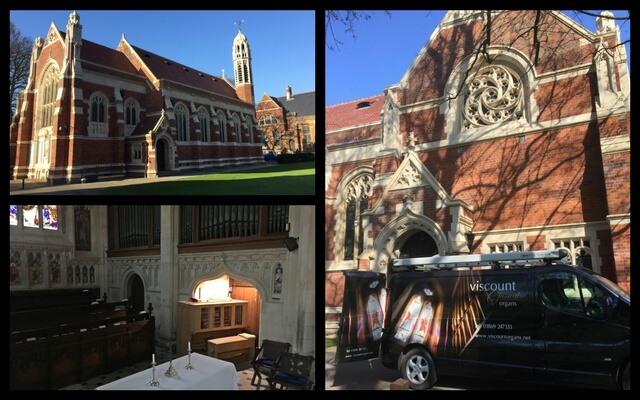Pipe Organ or Digital Organ?
The chapel pipe organ was installed in 1904 by William Hill, one of the ‘Great Three’ British builders, the others being Harrison and Willis. That said this particular Hill was never one of his finer instruments and was substantially rebuilt in 1934 by the successor firm of Hill Norman & Beard. The National Pipe Organ Register survey of 1973 notes the organ was in poor condition with a further rebuild planned and a recent report on the instrument recognises that major work is required to bring the organ into reliable and good order and at a cost that the quality of remaining pipe work struggles to justify. It is also an electric action instrument and so does not offer as a playing or teaching instrument the more intimate connection of musician with instrument offered by a mechanical action instrument. It was in that context that the school explored a digital organ as an alternative.
Other issues to considered included the difficulty of a pipe organ in the current location to ‘speak’ well into the chapel. This is a problem all too often found with pipe organs and difficult to overcome. Digital instruments have by some measures an unfair advantage as speakers for the sound source are so much easier to position in places where the sound will far more satisfactorily fill the building. They also provide scope to easily create antiphonal parts of the instrument that often create more detailed and flexible accompaniment options.
Speaker installation and placement is important
Leys School took full advantage of this with speakers being placed high up in the roof and out of sight near the west end with a small Great and Pedal organ playing there together with the almost obligatory West End Trumpet! You can see in some of the pictures the height at which we had to work to place and conceal these speakers.
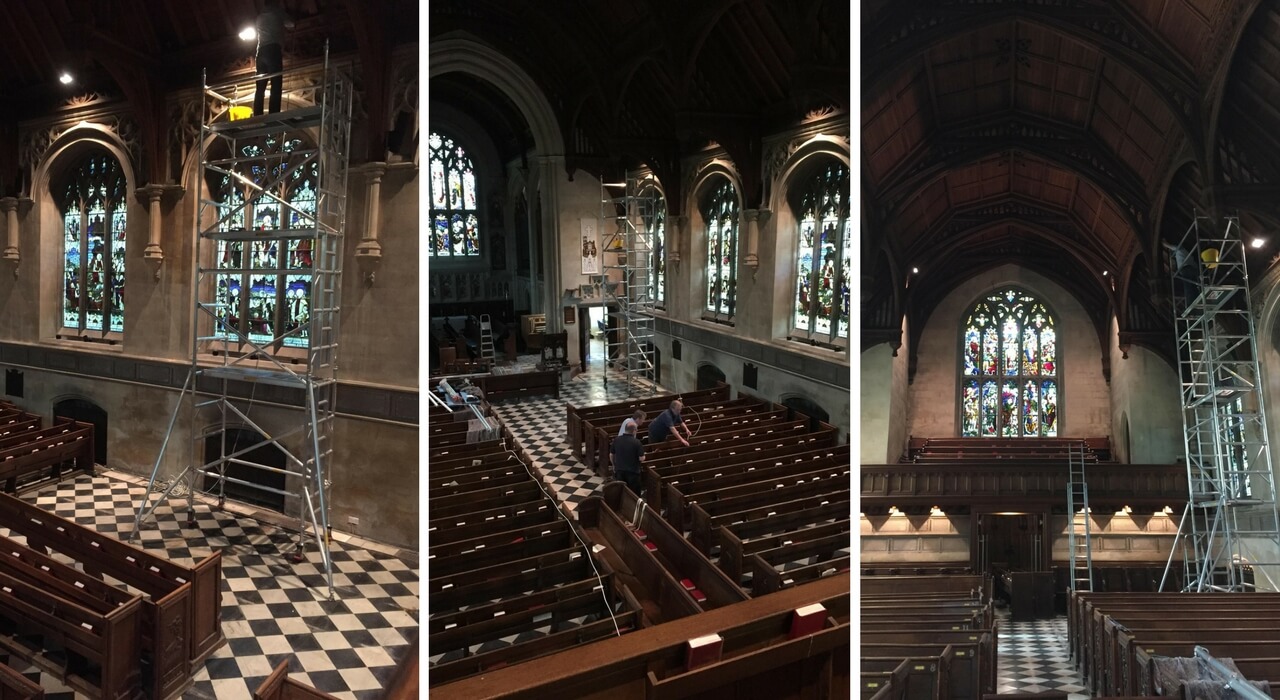
Speakers were also installed in the pipe chamber that required the use of the organ soundboards. Many pipes were removed to make space but these were carefully stored in the pipe chamber to make any future reconsideration of reinstating the pipe organ easier.
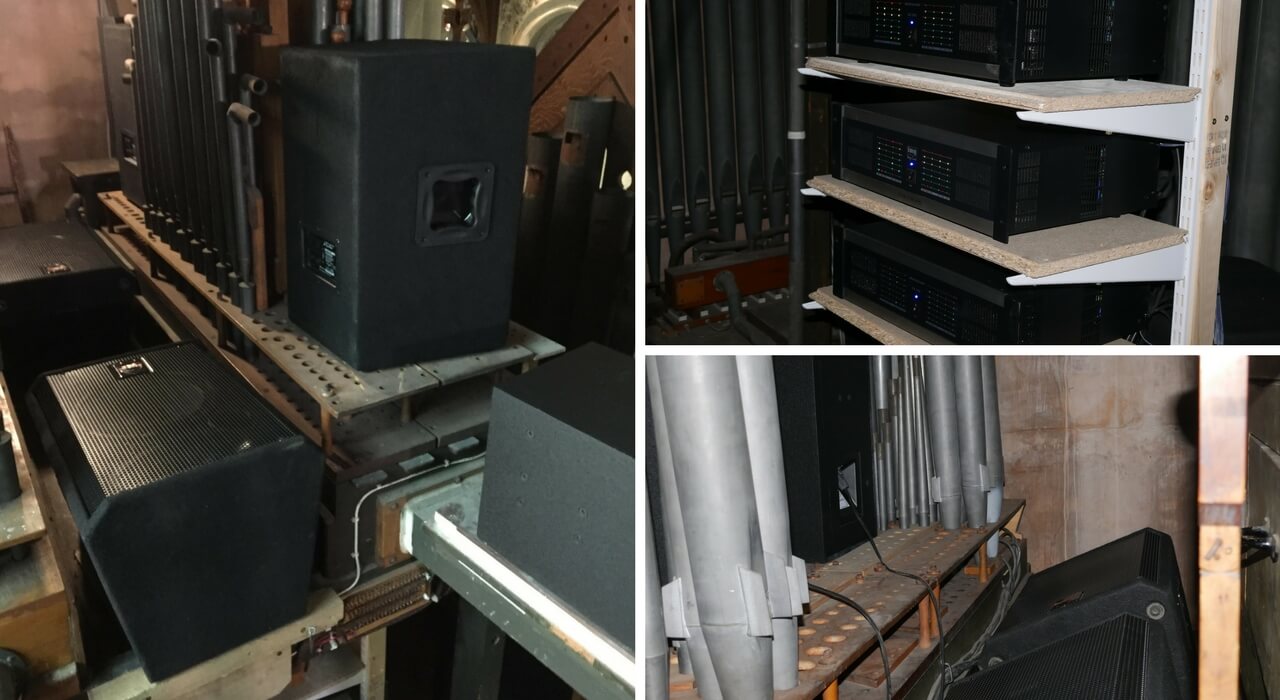
Leys School Chapel – A place worship
School chapels are often evocative places of worship linked as they are with very closed and young communities and Leys Chapel is no exception to this. The chapel, in and outside, has numerous memorials to those former pupil’s lives lost in 2 world wars and many other conflicts as well. Seeing so many memorials concentrated with such young ages is a very moving experience.
Another feature of the chapel are the wonderful carvings on every pew end some of which you see in the pictures with this blog. The pews are heavy as we know all too well as we had to move them all as our scaffold tower slowly moved down the south side of nave from chancel to west end and then across to the north side.
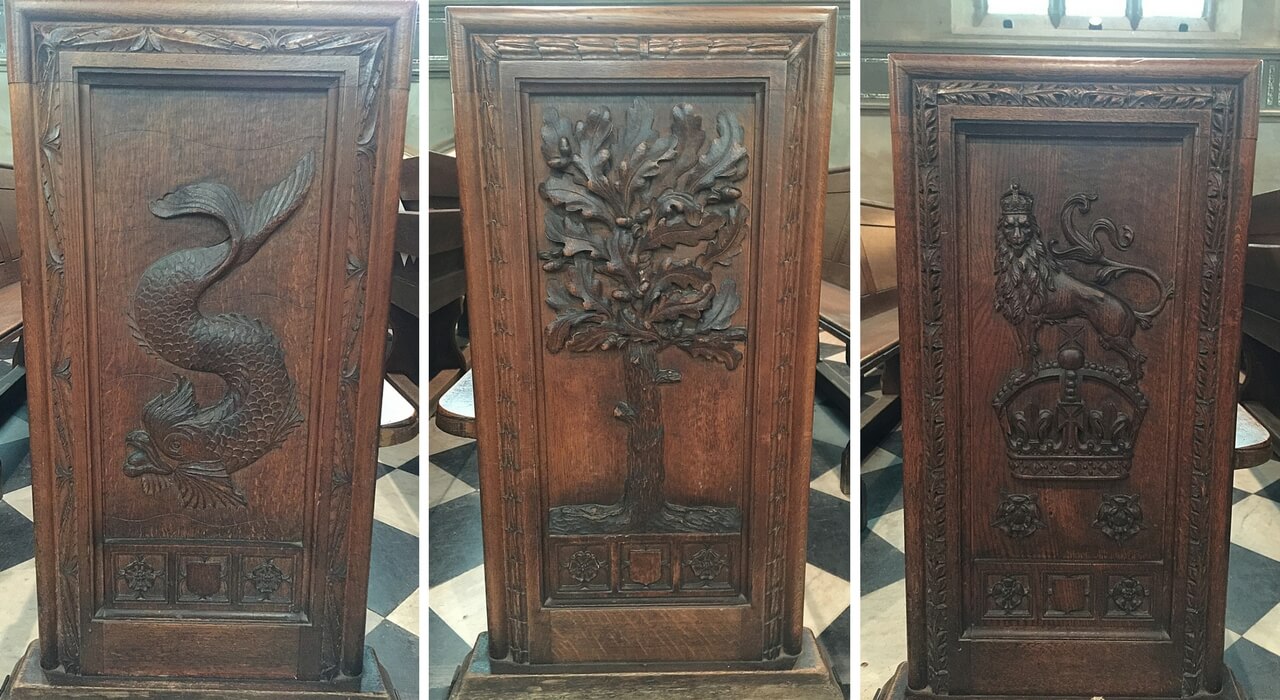
These pews were all a gift of a former pupil who together with his 7 brothers were all pupils at the school as a now very faded and discrete plate attached to each pew records.
Quite an achievement in the early 20th century to have 8 children (perhaps more as I expect there were some sisters!) and send them all off to private school.
Voicing of our Regent Classic digital organ
The final job of installation is voicing. This cannot be rushed and with an instrument of this size takes many hours work. The console as you see is right under the pipe case and not best placed for organist to hear the instrument. How often is that the case! After a few weeks it was decided to reorder the chancel and the choir stalls are now under the east window behind the alter allowing the console to move more into the chancel to give the organists a better chance of getting the balance right. While not at all conventional I am sure the organist appreciated the changes. I wonder how long a church might take for to agree such a radical rearrangement.
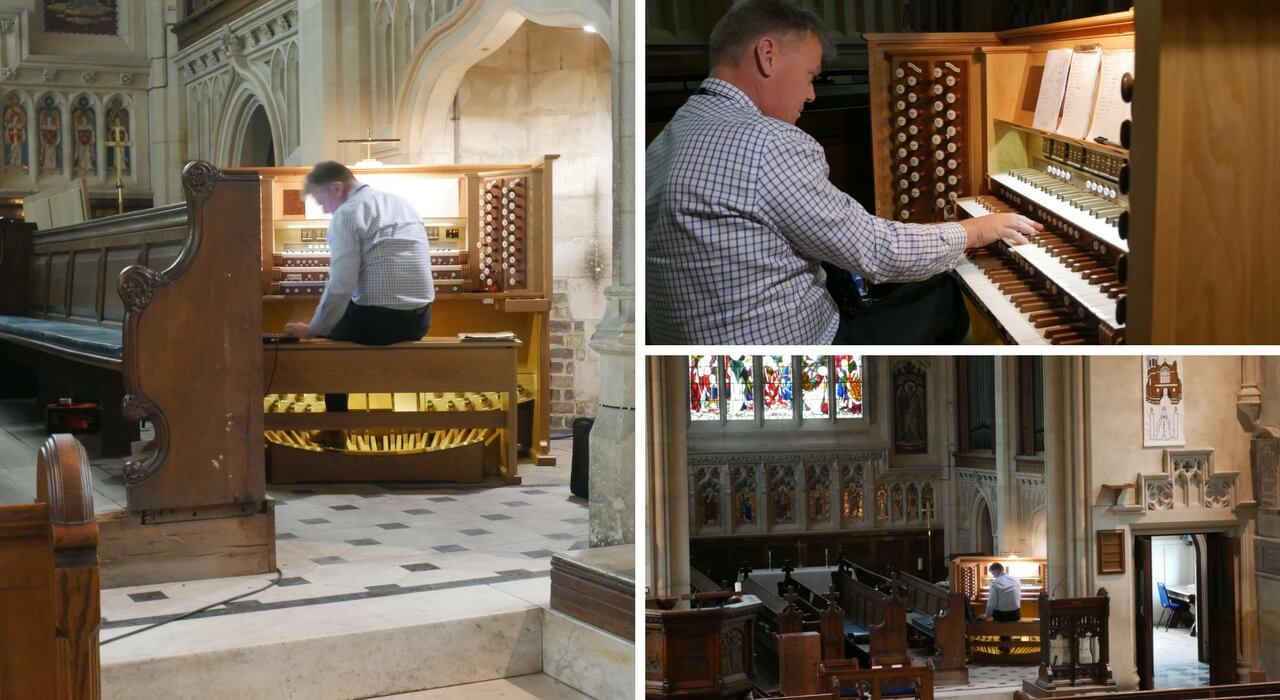
Thank you Leys School – It was a pleasure working with you
Another nice feature in the chapel is the memorial to a past organist set into the wall close to the console. You sometimes see these little mementos in our parish churches but they are quite rare. Those remembered must have made quite an impact in their day.
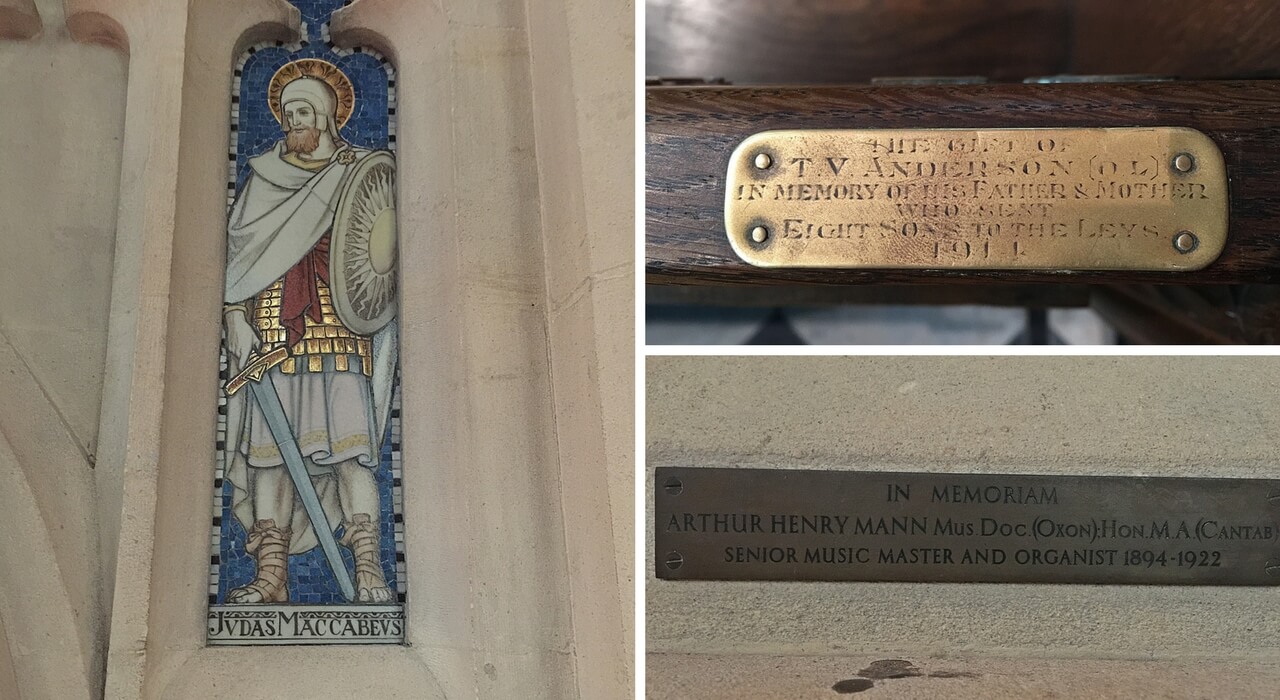
It has been a pleasure working at the school allowed as we were private access to this building that holds so much memory of pupils mostly past and of course present. The love they clearly demonstrate for their colleagues and comrades is evident in almost every single brick and not least by the gift of the magnificent west end window. This is clear evidence of the understanding they shared for the privilege of education the school gifted them.
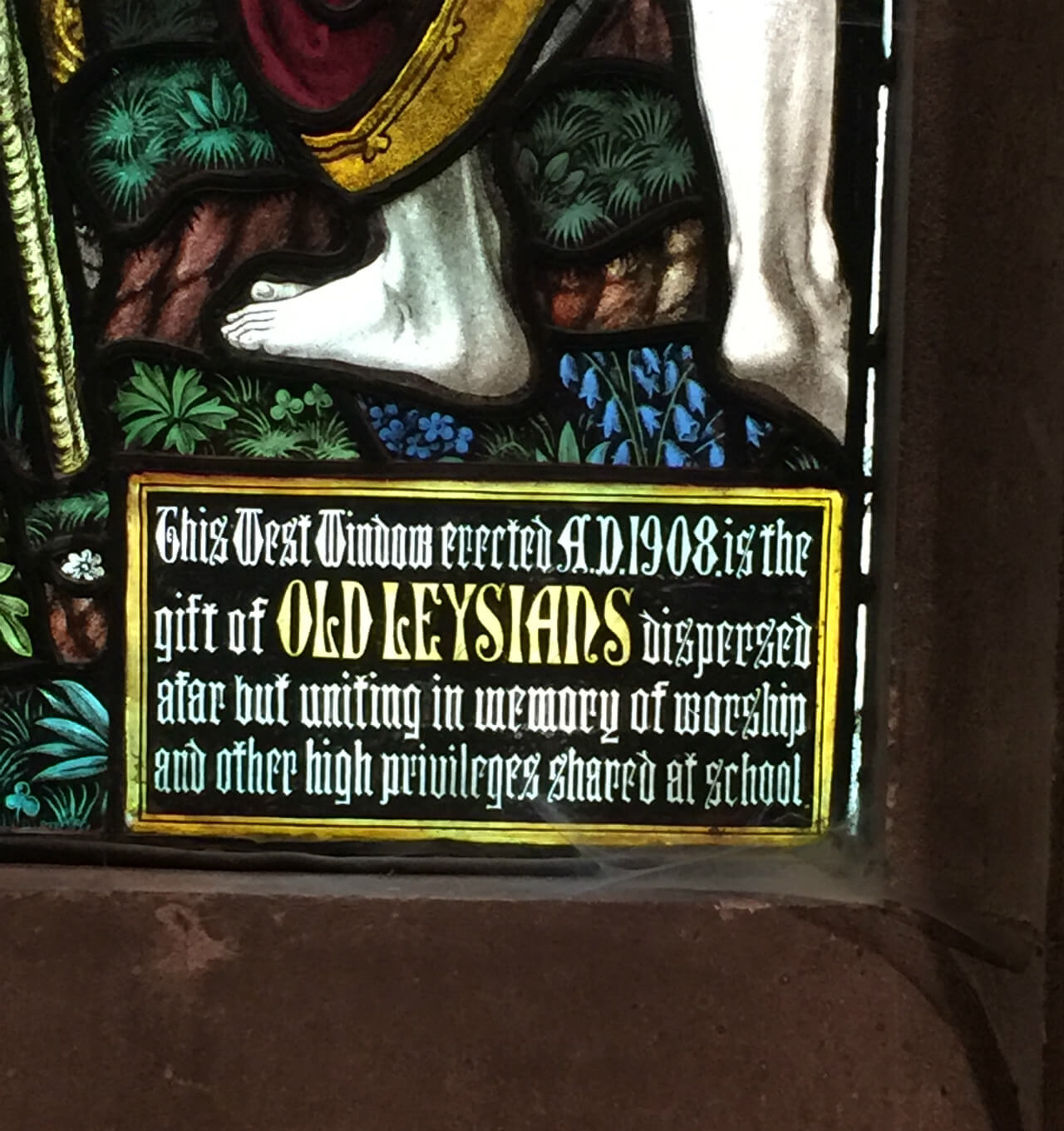
I hope you have enjoyed this account of our work and the chapel and if you have listened to the recording of the instrument also found that, while not pipes, it is worthy of the setting in which it plays.
Finally you can read a testimonial from the customer and see the organ stop table here.
I have had a passion for church organs since the tender age of 12. I own and run Regent Classic Organs with a close attention to the detail that musicians appreciate; and a clear understanding of the benefits of digital technology and keeping to the traditional and emotional elements of organ playing.
